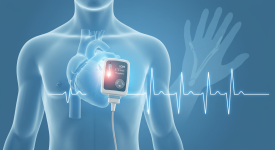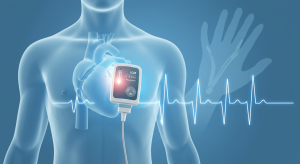
Insertable cardiac monitor atrial fibrillation Dupuytrens
A trial Fibrillation Detection With Insertable Cardiac Monitors: Insights for Dupuytren’s patients
 Intro
Intro
For patients with Dupuytren’s contracture, managing heart health is particularly important because many share common risk factors such as diabetes, hypertension, and metabolic syndrome. These conditions increase the likelihood of developing atrial fibrillation (AF), a heart rhythm disorder that significantly raises the risk of stroke. Traditional monitoring methods like standard ECGs or short-term Holter monitors often fail to capture intermittent or “silent” AF episodes, leaving patients at risk without timely detection.
Recent real-world studies highlight that insertable cardiac monitors (ICMs) for atrial fibrillation detection in Dupuytren’s patients provide a major advantage. These small, implantable devices continuously track heart rhythm over months to years, identifying AF episodes that would otherwise go unnoticed. Early detection allows physicians to implement preventive strategies such as anticoagulation therapy or lifestyle interventions, which can reduce the risk of stroke and other cardiovascular complications.
What the Study Found
This U.S.-based study tracked 2,469 patients (50% post-stroke/TIA) using ICMs—small devices inserted under the skin to monitor heart rhythms continuously for up to 3 years. Among stroke survivors, AF detection reached 5.5% at 12 months and 14% at 36 months, with episodes often brief (median 73 minutes) but significant enough to warrant anticoagulation. Older age increased detection odds (~1% per year), and ICMs outperformed short-term tests like 24–48-hour Holters, which miss intermittent arrhythmias. Detection was lower than in controlled trials (e.g., 30% in CRYSTAL AF), reflecting real-world variability, but continuous monitoring proved superior for catching elusive rhythms.
Why This Matters for Dupuytren’s Patients
Dupuytren’s contracture is linked to a 20-30% higher cardiovascular risk, including AF, due to overlapping conditions like diabetes (a top AF driver) and fibrotic pathways that may affect vascular health. Undetected AF can lead to strokes, which impair hand function further through reduced circulation or post-stroke mobility challenges, complicating treatments like collagenase injections or surgery. ICMs offer a proactive solution: by catching AF early, they enable blood thinners (reducing stroke risk by up to 64%) and rhythm control, preserving overall health for Dupuytren’s management. For patients with prior cryptogenic strokes, palpitations, or age >65 (common in DD), ICMs provide clarity where brief tests fail.
Key Takeaways
- Continuous ICM monitoring detects AF 2-3x better than spot checks.
- Early AF diagnosis supports stroke prevention, crucial for DD patients’ mobility.
- Devices are low-maintenance, remote-enabled, and ideal for chronic conditions.
- Ask your doctor about ICM eligibility if you have stroke history or symptoms.
What to Ask Your Doctor
- Does my Dupuytren’s/diabetes history warrant ICM screening for AF?
- How would AF detection impact my stroke prevention or hand therapy?
- What are the risks, costs (often covered post-stroke), and follow-up?
Limitations & Full Study
Real-world results vary by clinic and patient group; longer monitoring may yield more. No direct Dupuytren’s data, but CV links are clear. Full study.
Source & Attribution
This page provides a patient-friendly summary of “Atrial fibrillation detection using insertable cardiac monitor after stroke: A real‐world cohort study” by Noubiap et al. (Journal of Cardiovascular Electrophysiology, 2023). Full open-access article courtesy of Wiley on PubMed Central: https://pmc.ncbi.nlm.nih.gov/articles/PMC10099521/. Copyright © 2023 Wiley. Summary for educational purposes only; no article text or figures reproduced here. For complete details, visit the link above.
Join our Dupuytren’s community for heart-health insights and support: https://www.facebook.com/groups/dupuytrensolutionsandhealth.
Discover all treatments in Dupuytren’s Solutions (Nov 2025): https://www.dupuytrensolutions.com.

 Intro
Intro
